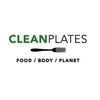
Published on Clean Plates
By Beth Lipton
If you’ve ever noticed the word “iodized” on your box of table salt and wondered what it meant, you’re about to find out.
WHY DO I NEED IODINE?
Iodine is a mineral that your body needs but can’t produce on its own. It’s “necessary for the production of thyroid hormones,” says endocrinologist Dr. Elizabeth Pearce, an associate professor at Boston University School of Medicine. “These hormones regulate how the body uses energy, breathing, body temperature, and many other critical functions. In pregnant women, thyroid hormones regulate the brain development of the fetus.”
“Your body can’t function without thyroid hormones,” says functional medicine practitioner Dr. Will Cole. “If your thyroid isn’t working well, nothing is working well.”
HOW MUCH IODINE DO I NEED?
“Adequate intake is about 150 mcg/day for adult males and females, although more is needed during pregnancy and lactation,” says registered dietitian Eliza Savage of Middleberg Nutrition. Pregnant and lactating women need 220 and 290 mcg/day, respectively.
“It’s the ‘Goldilocks’ principle. You don’t want too much, or too little. It’s important to get the right amount,” Cole says. “This couldn’t be more true for iodine.”
If too little iodine can interfere with all of the body’s functions, and can cause serious fetal development issues—what happens if you get too much? “There is evidence in the research that shows that it can flare up thyroid autoimmune problems,” Cole says. “If someone has a history of autoimmune thyroid issues, I recommend that they get iodine through food rather than supplements” to keep from overdoing it. Too much iodine is also associated with other thyroid disorders.
Pro tip: “It’s interesting to note that thiocyanate-containing foods may interfere with the uptake of the iodine into the thyroid gland, so people who are concerned with iodine intake may want to avoid cassava, soy and brassica veggies” such as cauliflower, kale, broccoli and Brussels sprouts, Savage notes.
Also, Cole suggests getting your iodine levels measured via a blood test before adding more iodine to your diet (or cutting back), to be sure your intake matches your individual needs.
HOW DO I GET IT?
Iodized salt was introduced in the 1920s, when goiter, or enlarged thyroid, became common in the Northwest, Great Lakes and Appalachian regions of the U.S., where iodine deficiency was common. Though iodized salt is still common on supermarket shelves, Cole notes, he doesn’t recommend it.
“I’m not a fan of iodized salt,” he says. “It’s very processed, devoid of most minerals, and I don’t like the anticaking agents in there, like aluminum.”
Luckily, even without iodized salt, there are plenty of healthy and delicious ways to make sure you’re getting enough of this essential mineral. “If you’re eating a balanced diet, you should be able to meet your needs quite easily,” Savage says.
Produce such as garlic, lima beans, Swiss chard, spinach, and edamame contain iodine, Savage notes, though she cautions that the amount may vary based on the depletion of minerals in the soil. (There is a trace amount of iodine in sea salt, though it’s not considered a good source of the mineral. The precise amount varies depending on where it’s harvested.)
Grass-fed beef and pastured eggs have some iodine as well, Cole says. Pearce includes dairy as a rich source of iodine, though Cole recommends sticking to fermented varieties such as kefir and yogurt—“grass-fed, full fat, and all that good stuff, of course”—and only if you tolerate it well.
“The foods that have the highest amount of iodine are sea vegetables, like dulse, kombu, nori, and kelp,” Cole says. (We love Sakara Life’s Nori Chips.) “Kelp actually has the most iodine of all the sea vegetables.” He also recommends wild-caught ocean fish and shellfish, though Pearce notes that as with vegetables, the level of iodine can vary greatly in fish, so it can be hard to gauge exactly how much you’re getting.
Intimidated by sea vegetables? Here are some simple, tasty ways to include them in your diet:
- In a smoothie: Toss a kelp cube into the blender with your favorite ingredients.
- In hummus: Whirl it into the blender with chickpeas and avocado for a thoroughly modern, super-healthy take on the spread.
- In beans: If you cook dried beans, add a strip of kombu to the water for a mineral hit. Bonus: The kombu can help make the beans more digestible.
- In dressings, sauces and sandwiches: Whisk some spirulina into a salad dressing or sauce, or roll up your favorite sandwich fillings in nori instead of a regular wrap.
BIO: Beth Lipton is a contributing editor at Clean Plates.
More of the latest healthy recipes, tips and nutrition news:
Connect With Us
Join the community at Clean Plates on Facebook
Follow Clean Plates on Instagram
